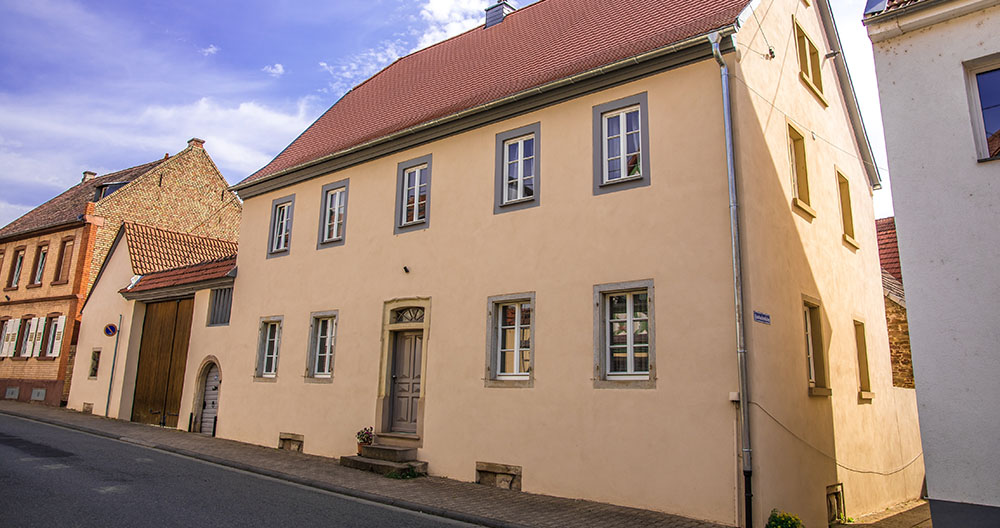
Here we are standing in front of a classic 18th-century farm complex, as it can be found in many villages and communities around here.
And yet, it is precisely this courtyard that is something special: because the preservation authorities classify it as “one of the best preserved in Rheinhessen”. Only a little changes have been made to its classic, closed four-sided shape over the years. Residential house, barn, wine press house, the typical large gate – all of this has not changed its appearance significantly. Hans Peter Hexemer of Nierstein’s History Society:
It is the allocation of residential buildings and farm buildings, and that it is basically a whole unit. You can drive into the courtyard and have all […] necessary building parts in one closed courtyard. It is a bit like a castle, with everything hidden behind a large closed gate.
„Mein Home is my Castle“, is a well-known English saying. It seems like this has also been true in Schwabsburg.
It used to be a living- and working space for many people. The owners did not operate their farm all alone and by themselves, they had staff. And the staff lived in small houses in the neighbourhood. This can still be seen in Nierstein, for example in the Häfnergasse: the so-called day laborers’ houses. Even in Schwabsburg you can still find many small houses that date back to this time when the landowners had their staff, their day laborers, who could only work and afford their lives in connection with such estates.
And so manors like this particularly well-preserved, played a major role in Rheinhessen – economically, socially and in terms of the town-development.
You’ll find the next stop of tour through Schwabsburg on the map on this website.


Here we are standing in front of a classic 18th-century farm complex, as it can be found in many villages and communities around here.
And yet, it is precisely this courtyard that is something special: because the preservation authorities classify it as “one of the best preserved in Rheinhessen”. Only a little changes have been made to its classic, closed four-sided shape over the years. Residential house, barn, wine press house, the typical large gate – all of this has not changed its appearance significantly. Hans Peter Hexemer of Nierstein’s History Society:
It is the allocation of residential buildings and farm buildings, and that it is basically a whole unit. You can drive into the courtyard and have all […] necessary building parts in one closed courtyard. It is a bit like a castle, with everything hidden behind a large closed gate.
„Mein Home is my Castle“, is a well-known English saying. It seems like this has also been true in Schwabsburg.
It used to be a living- and working space for many people. The owners did not operate their farm all alone and by themselves, they had staff. And the staff lived in small houses in the neighbourhood. This can still be seen in Nierstein, for example in the Häfnergasse: the so-called day laborers’ houses. Even in Schwabsburg you can still find many small houses that date back to this time when the landowners had their staff, their day laborers, who could only work and afford their lives in connection with such estates.
And so manors like this particularly well-preserved, played a major role in Rheinhessen – economically, socially and in terms of the town-development.
You’ll find the next stop of tour through Schwabsburg on the map on this website.


